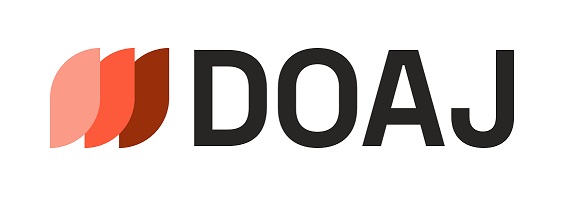Moralizing the Art Market: A Socioeconomic Perspective on Art Auctions on the Floor and Online
DOI:
https://doi.org/10.23690/jams.v3i1.80Keywords:
Art market, Art auctions, moral economics, InternetAbstract
Recent analyses of the art world show that the market has taken a primary position in generating the narratives of the art discourse which was led in the past by museums and curators. This shift raises a significant political issue: while conventional curatorial practices are subjective and elitist, we might assume that a shift towards the primacy of more organic structures, such as the market, conveys a more equal representation of the participants in the art world, and thus a more ethical structure of it. Yet ethics is a concept that is more social than economic, and the above assumption therefore depends on the prevailing economic approach at a particular time and place, and the political and cultural agenda it serves. This paper aims to offer a qualitative analysis of the contemporary art market as shaped by the neoliberal conditions underlying it, through the perspective of moral economy. Specifically, this study will evaluate the concept of equality in relation to online auctions, positioning the latter at the crossroads of political and social theory.
References
Angeleti, Gabriella, “Paddle8 to Allow Cryptocurrency in Online Auctions,” The Art Newspaper, January 23, 2018. Available at: https://www.theartnewspaper.com/news/paddle8-paves-the-way-for-cryptocurrency-in-online-auctions.
Ashenfelter, Orley and Kathryn Graddy, "Anatomy of the Rise and Fall of a Price-Fixing Conspiracy: Auctions at Sotheby's and Christies's," Journal of Competition Law & Economic 1, 1 (March 2005), http://www.nber.org/papers/w10795.pdf.
Barragán, Paco, “Neo-modernity, Neo-biennalism, Neo-fairism,” in 2000 and Beyond: Contemporary Tendencies, vol. 5 of The Art of the Twentieth Century series, ed. Valerio Terraroli, Milan: Skira, 2010, 275-291. Excerpts reprinted in A History of the Western Art Market: A Sourcebook of Writings on Artists, Dealers, and Markets, ed. Titia Hulst, Oakland: University of California Press, 2017, 371-374.
Bourdieu, Pierre, “The Field of Cultural Production, or: The Economic World Reversed,” Poetics 12, Issues 4–5 (November 1983): 311-356.
Friedman, Milton, Economic Freedom, Human Freedom, Political Freedom. Lecture delivered at the Smith Center in 1991. Available at: http://www.calculemus.org/lect/07pol-gosp/frlect.pdf.
Gilbert, Jeremy, “What Kind of Thing is ‘Neoliberalism’?” in Neoliberal Culture, London: Lawrence and Wishart, 2016 [2013].
Graw, Isabelle, High Price: Art Between the Market and Celebrity Culture, Berlin and New York: Sternberg Press, 2009.
Hennion, Antoine, “A Plea for Responsible Art: Politics, the Market, Creation,” in Art and the Challenge of Market, Volume 2, eds. Alexander, Victoria D. Alexander, Samuli Hägg, Simo Häyrynen and Erkki Sevänen, Cham, Switzerland: Palgrave Macmillan, 2018, 145-169.
Hiscox Online Art Trade Report 2018. Available at: https://www.hiscox.co.uk/online-art-trade-report.
Hoffmann, Jens, “When Attitudes Become Commodities (Become Attitudes),” For Sale, Lisbon: Cristina Guerra Contemporary Art, 2007, n.p. Reprinted in The Market, Natasha Degen, ed., London: Whitechapel Gallery and Cambridge, MA: MIT Press, 2013.
“House Pride: The Art World Is Changing Faster than Sotheby’s and Christie’s Are Adapting their Business Model,” The Economist, Jan 28th 2016. https://www.economist.com/business/2016/01/28/house-pride.
Klein, Naomi, No Space, No Choice, No Jobs, No Logo: Taking Aim at the Brand Bullies, New York: Picador, 1999.
------, The Shock Doctrine: The Rise of Disaster Capitalism, New York: Picador, 2007.
Lee, Pamela M., “Economies of Scale: Pamela M. Lee on Takashi Murakami's Technics,” Artforum (October 2007): 336–343.
-----, Forgetting the Art World, Cambridge, MA: MIT Press, 2012.
MacIntyre, Alasdair C., After Virtue (Notre Dame, IN: University of Notre Dame Press, 1981.
McAndrew, Claire (Art Economics), The Art Market 2018: An Art Basel & UBS Report. Available online: https://www.ubs.com/global/en/about_ubs/art/2018/contemporary.html.
Schuetz, Molly, “New York’s Artsy Is Making It Even Easier to Buy Art Online,” Bloomberg, March 27, 2018. Available at: https://www.bloomberg.com/news/articles/2018-03-27/new-york-s-artsy-is-making-it-even-easier-to-buy-art-online.
Smith, Terry, Contemporary Art: World Currents, London: Laurence King, 2011.
Thompson, Don, “Why Sotheby’s and Christie’s Don’t Operate Like Other Duopolies,” Artsy, Nov 24, 2016. https://www.artsy.net/article/artsy-editorial-why-sotheby-s-and-christie-s-don-t-operate-like-other-duopolies.
Velthuis, Olav, “Symbolic Meanings of Prices: Constructing the Value of Contemporary Art in Amsterdam and New York Galleries,” Theory and Society 32 (2003): 181-215. Reprinted in Velthuis, Talking Prices: Symbolic Meanings of Prices on the Market for Contemporary Art, Princeton, N.J. and Oxford: Princeton University Press, 2007, 158-178.
Zarobell, John, Art and the Global Economy, Oakland: University of California Press, 2017.
Published
How to Cite
Issue
Section
License
Copyright (c) 2019 Ronit Milano

This work is licensed under a Creative Commons Attribution-NonCommercial 4.0 International License.
Except where otherwise noted, the Journal for Art Market Studies is licensed under the Creative Commons Attribution-Non-commercial 4.0 International license (https://creativecommons.org/licenses/by-nc/4.0/). Articles can be read and shared if attribution is given to the original source (BY) and the use is not for commercial purposes (NC).




